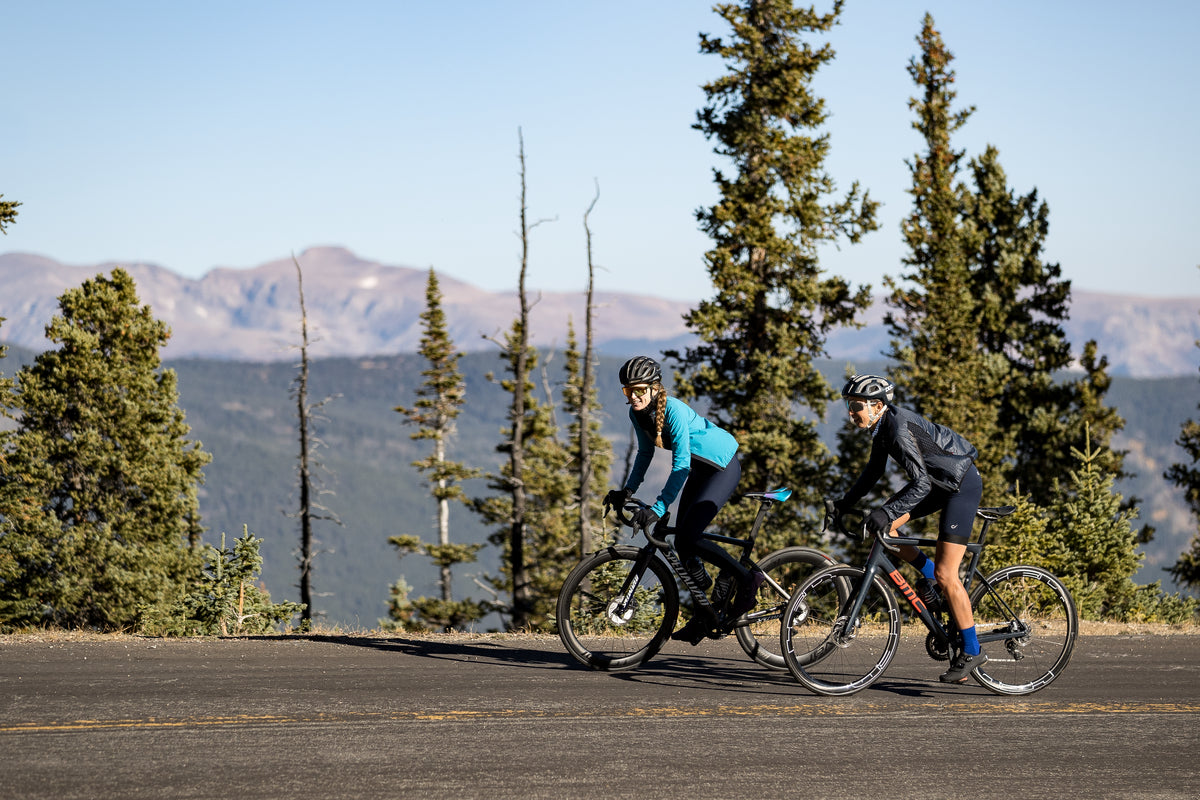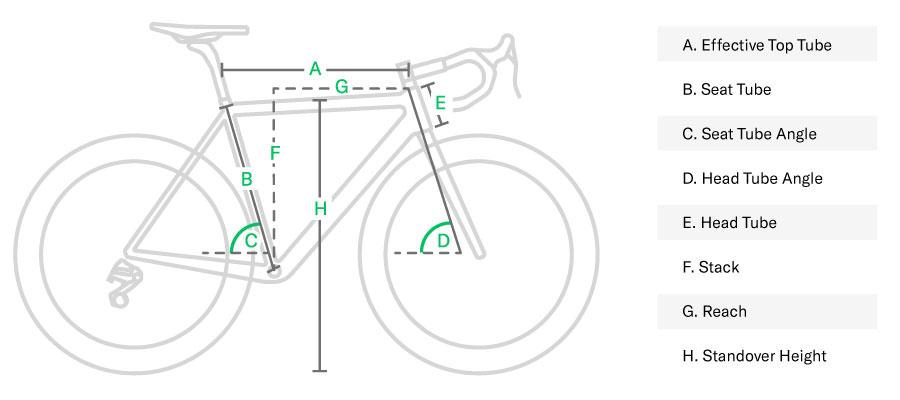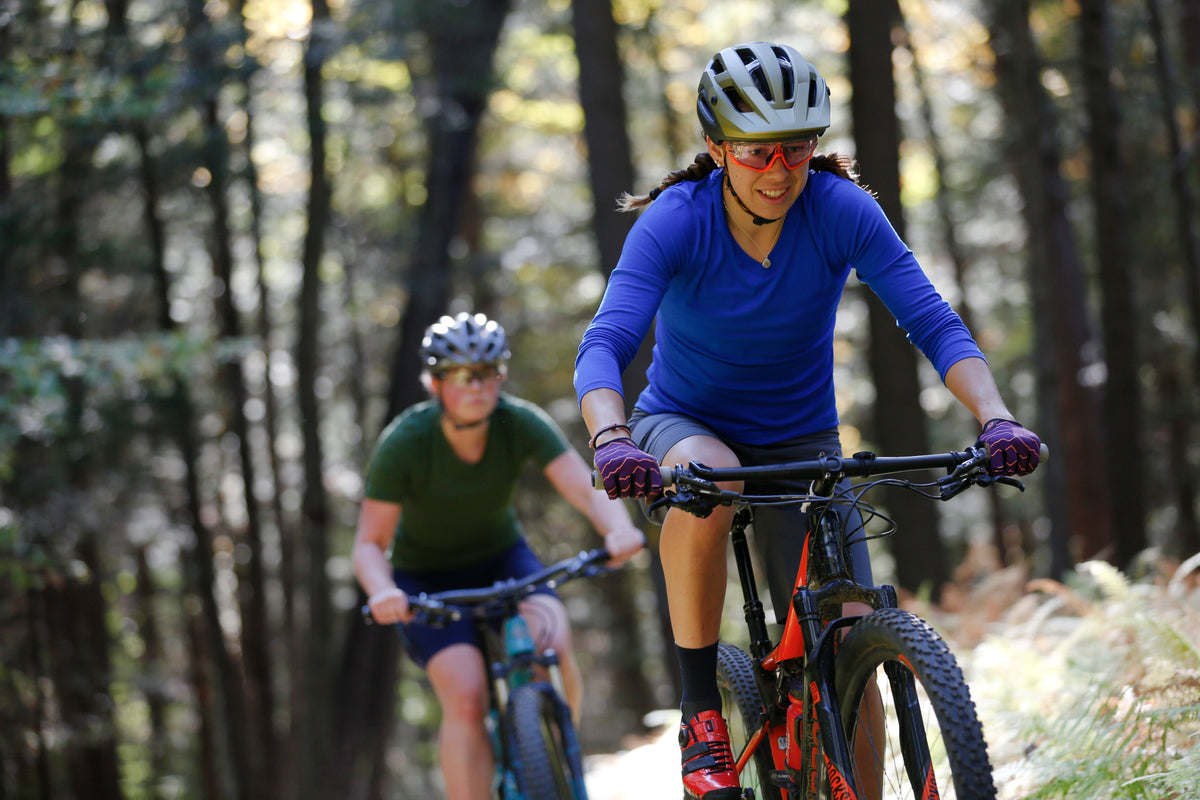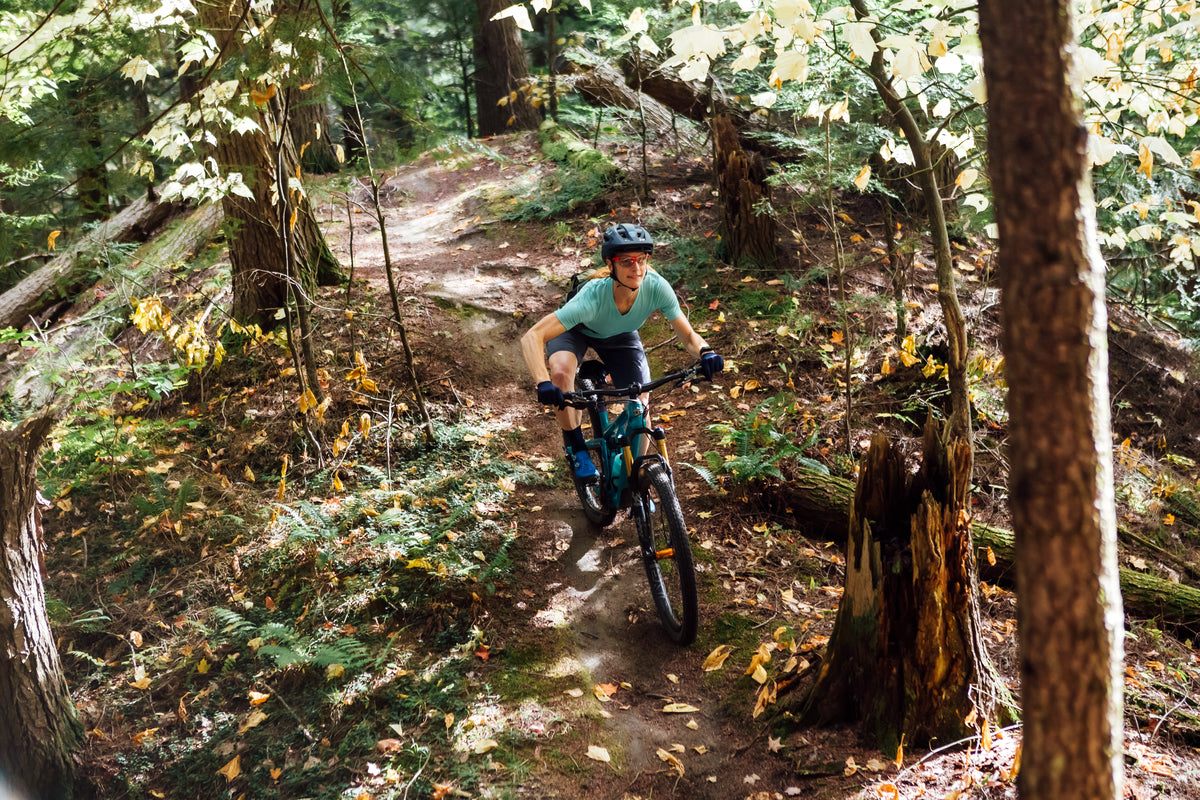Updated March 1, 2021
No matter where you are or what kind of riding you’re doing, your bike can make or break the experience. Everyone wants to feel like the bike they’re on was made just for them. And these days, women-specific bikes have advanced to the point that brands are hiring engineers and designers to consider things like anatomical and physiological differences between women and men. Bike production now involves extensive research and testing to ensure that women have bikes and parts that were made especially for them.
Bikes that suit women better — its a rising trend that hopefully will continue.
Certainly anyone can ride any bike that fits well and feels good, but many brands are creating updated versions of bikes and components with women in mind. So how do you know which bike will be your perfect fit? Here are a few key considerations.
Women’s bikes vs. men’s bikes: What’s the difference?
Fundamentally, nothing. Do women need bikes made specifically for women? Not necessarily. But is it worth considering? Absolutely. Brands used to simply drop the top tube and slap some pink paint on a frame, but now there’s a lot of great research and testing going on. All bodies work a little differently, and all bikes do too. Fortunately, today’s array of modifications and parts can help anyone set up the perfect ride.
Women’s bikes are usually designed to suit shorter torsos and arms, smaller hands, and lighter bodies. The geometry of women’s bikes differs slightly and the frames tend to be more compact with shorter stack height and reach. Here's a simplified chart that highlights some key bike geometry measurements.
The components may also vary on women’s bikes. The saddle, stem, handlebars, and suspension can all alter the fit and feel of a bike (more on that later).
Is women’s sizing different?
Unlike women’s pant sizes, frame measurements actually mean something. And women’s bikes usually follow the same sizing conventions as unisex frames. Bike sizing refers to the frame size, and is most commonly listed in centimeters (48cm, 56cm, etc.) for road bikes and lettered sizes for mountain bikes (S, M, L, etc.) But frame size is just the beginning. Adjustments to the stem size, handlebar width/position, saddle, and brake levers can make any frame size a completely different fit.
What about components?
A lot of people ask what the differences are between Shimano and SRAM components, and why they should choose certain components over others. This, like most things, comes down to personal preference. As you might expect, none of these manufacturers offer women-specific drivetrains or brakes, for instance.
But it’s important to consider a couple of component details that offer options for customization. Because of mobility issues or comfort, some people might prefer a shorter crank. Most brands offer a few crank arm lengths; shorter riders often opt for 170mm, while taller riders might ride 175mm crank arms. The majority of road bikes usually have 172.5mm crank arms.
Second, gearing should also be chosen to suit your typical rides. Are you going to climb as many mountain passes as possible? Or are you using a road bike to train for a triathlon? The gearing for each scenario can help immensely. Sometimes, gearing alone can help you achieve a major goal, or just make your daily riding easier.
Picking the right stem
The stem may seem like a minor part of a bike, but it can affect the entire fit and feel. Combined with top tube length, it sets your reach, so the right stem puts your whole body in a comfortable, balanced, and powerful position. Maybe you want a shorter stem to bring your handlebars closer. Or maybe you prefer the personality of a smaller frame but need a longer stem to afford a longer reach. It’s certainly worth playing around with stem length to find the perfect fit.
Mountain bike stems vary in length, but modern bikes typically have something between 40 and 100mm. The ideal length depends on the terrain and style of riding you’ll be doing. For mountain biking, stem length really dictates the steering and body position. A shorter stem, often found on a trail or enduro bike, helps center your body between the wheels and makes it much easier to drop your weight to the back of the bike on steep descents. Cross-country riders usually opt for longer stems so they can comfortably shift their weight over the front wheel on steep climbs. Overall, most modern mountain bikes have a longer reach to encourage the use of a shorter stem, and thus allowing for more controlled steering.
Finding the right handlebars
Women’s bikes tend to be designed for narrower shoulders. If you commonly have shoulder, arm, neck, or back pain, your handlebars might be the reason. In the past we’ve often heard that wider handlebars are better — more stability, more control, especially on mountain bikes. But that’s kind of like saying more coffee is better — higher energy, more focus. Alas, only to a point. Sometimes narrower handlebars are better, and sometimes one less cup of coffee is the way to go.
With road and gravel bikes, the general rule when selecting handlebar width is to measure the distance between the two bony ends (acromioclavicular joints) on your shoulders. If the distance between your joints is 35cm, look for handlebars that are approximately that wide.
Mountain bike handlebar is less about an equation and more about preference. The proper handlebar width improves your stability and overall comfort. It also puts you in the most efficient riding position, with your wrists, elbows, and shoulders aligned so that you can control and steer the front wheel with ease. Riders with longer-travel bikes who prioritize downhill performance usually prefer wider bars. The extra leverage affords more control in technical terrain. Cross-country riders often prefer slightly narrower bars. No matter the terrain, you want your arms at the strongest position — think push up stance. Don’t be afraid to try different widths — you can always buy wider bars and then cut them down.
Handlebars and stem can make a big difference in performance and comfort, especially on a mountain bike.
Saddle up
When it comes to the saddle, it’s all about the sit bones. Generally, but not always, women have wider sit bones than men, and thus feel more comfortable on a saddle that’s wider in the back and narrower in the nose.
One way to pare down your hunt for the best saddle is to have your sit bones measured — something that can be done at most bike shops. Unless you’ve been measured (which usually just involves briefly sitting on a foam pad), you won’t know your size — it has nothing to do with your waist or clothing sizes.
Generally, the right saddle size is about 20mm wider than your sit bone width. Saddles come in three standard sizes, 130mm, 143mm, and 155mm. But it’s always a good idea to try a few out to see how they feel. If your sit bones measure 130mm, you might want to try both a 143 and a 155 to see what feels best. I’m right in the middle of 143 and 155 and 155 almost always feels better to me.
Saddles made for women
Many women-specific saddles have cut-outs or pressure relief channels to avoid numbness and discomfort. Saddle choice is very personal, and the right shape and materials can make all the difference, especially for those long days on the bike. These are a few of my favorite saddles. I just recently put a Specialized Power Mimic 155mm on my gravel bike, and I love it.
Specialized Power Mimic
Comes in several widths, the geometry and materials are the result of several tests conducted to reduce pressure and provide structural and anatomical support for soft tissue.
Fi’zi:k Women’s Luce Carbon R1
Includes a pressure-relief channel through the middle of the saddle to promote circulation, and a slightly cushioned cover that provides flexible support.
Ergon Sport Gel Women’s MTB
Made with orthopedic foam and a large contact area, this saddle features a flat profile for dynamic sitting in different positions without tilting effects.
Wheel size
Choosing the right wheel size depends on the type of bike and terrain you’re looking to ride. Wheel size tends to get more attention on the mountain bike side of things, though there are some road wheel discussions, namely between 700c and 650b sizes. And even more debate when it comes to tire width, though that has more to do with terrain and comfort than the fit of the bike. Tire widths can be adjusted depending on your local terrain.
When it comes to mountain bike wheels, though, they can impact the fit and comfort of the bike. For a long time, 26” wheels were all the rage, then 29” gradually got a following in the early 2000s and the industry decided to split the difference with 27.5” (a.k.a. 650b) wheels about 10 years ago.
The advantages of 29ers include being faster, smoother, and having improved traction. They also tend to be more forgiving, which makes them great for beginner riders. The disadvantages include being heavier and larger — sometimes it’s more difficult to fit 29ers on a smaller framed bike. But more and more, brands are figuring out how to put larger wheels on smaller bikes, which is great news for shorter riders, many of whom are women.
Dedicated gravel wheels have wider rims to fit gravel tires, which usually run 36-42mm. They’re made to absorb and dampen rough terrain. When you’re looking at gravel wheels, note the internal rim width. The wider the internal width, the wider the tires you can use. Road wheels have internal rim widths between 17 and 21mm while gravel wheels have internal rim widths in the 20-25mm range.
Suspension
Suspension is primarily found on mountain bikes, and it makes a huge difference in how a bike rides, and how comfortable a rider feels. Most mountain bikes have between 100mm and 170mm of suspension travel. While geometry, wheels, and tires also contribute to the comfort of the bike, suspension makes the most obvious difference, and should be adjusted according to a person’s weight.
How much suspension compresses from a rider’s weight is referred to as sag. Coil-spring preload or air pressure can be adjusted to achieve the optimal amount of sag for an individual. Beyond taking weight into consideration, part of choosing the right amount of suspension comes down to feel and preference. If you’re new to the mountain bike, you might be riding more conservative trails. After riding for a while, you might realize you prefer more or less travel depending on the kinds of trails and terrain you frequent.
Tuning refers to several measures that can be taken on a mountain bike, such as changing the oil, adjusting the compression settings, and altering the internals. An out-of-the-box bike comes with a specific suspension tune, and women’s bikes often have tuning for lighter weight.
Air-sprung suspension is generally the best choice for lighter riders because it provides a wider range of adjustment.
Sometimes it takes a little experience to settle on how much suspension travel you prefer.
Brake levers
You never want to feel like the bike is riding you. Something you may not think about, until you’ve had some close calls because you couldn’t stop fast enough, are your brake levers. Even if you don’t necessarily have small hands, you might struggle to reach the brake levers. This can be easily adjusted. On many brake levers, there’s a small allen-wrench bolt hidden behind your brake pivot that lets you bring the lever in closer to your bars.
Women-specific bike brands/models
Liv and Juliana (from the parent companies Giant and Santa Cruz) are both brands that are making only women-specific bikes. Several other brands (such as Canyon, Trek, and Specialized) are also making women-specific models. Here are a few road, gravel, and mountain bikes made specifically for women. These, of course, aren’t the only women-specific options, just a few that we like because of the geometry and components highlighted.
Road bikes
The Boardman SLR 8.9 comes with a women specific Fizik Luce saddle, a shorter reach stem, and narrow handlebars.
The Liv Enviliv Advance Pro 2 Disc is an aero bike and Liv has worked to ensure a geometry that fits a smaller reach while maintaining an aggressive aero fit.
The Canyon Ultimate WMN CF SL Disc 8.0 is especially great for smaller women — it comes in 3XS and 2Xs sizes, which feature 650b wheels.
Gravel/cyclocross bikes
The Liv Brava SLR features women-specific geometry with cyclocross in mind — it’s not just a smaller frame, the handlebars, brakes, and drivetrain are all tuned with race handling in mind.
Salsa’s Cutthroat GRX 810 1x was made with serious adventuring in mind — it’s a carbon frame and fork, which makes it very lightweight. Plus 20 mounts for bikepacking and epic all-day trips.
The Canyon Grail WMN AL 6.0 is tuned with women’s-specific contact points, including adapted cockpit dimensions and a Selle Italia women’s saddle. The smaller sizes also come with 650b wheelsets.
Mountain bikes
Big wheels (29-inch) on small frames is something that many manufacturers have struggled with. But Liv is making it happen, even for very small frames, with their Pique Advanced Pro 29.
The Specialized Fuse Comp 29 (hardtail) features a 750mm-wide handlebar (780mm on sizes medium and up), which allows for more controlled steering and a more stable ride.
The Juliana Maverick Carbon CC X01 Eagle Reserve has a total weight of 30 pounds, and features 140mm of rear travel with a RockShox Lyrik Ultimate 150mm fork, which allows for screaming descents while maintaining control.
When you’ve taken the time to consider all the ways that a bike can be put together to perfectly fit your body and needs, the only thing left to do is get riding!

